Despite what you may think, influencer marketing doesn’t revolve around consumer products; it can be for B2B businesses too.
After all, those looking to buy from you are not just “businesses,” they’re people too.
And the people behind the businesses you’re looking to work with are seeking reasons to buy from you before they commit to becoming your customer.
Your clients are more likely to trust an influencer’s opinions over claims that your business is the best.
That’s because industry thought leaders have worked hard to become authorities in their industry.
Not to mention, they’ve taken the time to build trust among people and now have the power and ability to change (or influence) the way your clients feel about your business.
That said, finding a B2B influencer can be tough. Most B2B businesses don’t rely on social media celebrities to promote their business, and there really aren’t that many B2B influencers out there.
But that doesn’t mean you can’t find one. It just means you might need to work a little harder than a typical B2C business does.
To help you out, we’ve outlined the 4 steps you need to take to find a B2B influencer that can help you expand your company’s reach, increase brand awareness, improve SEO, and even build your credibility.
So, let’s get started.
Step 1: Understand Your Target Buyers
The first thing you need to do is learn about your target buyers. After all, these are the businesses you want to sell to.
After narrowing down the type of clients you want to work with, you can then build your marketing strategies around them.
This way your money and brand messaging is directed at those most likely to buy from you, rather than a generic group of people that may or may not benefit from what you have to offer.
Here are some helpful tips for defining your target market:
- Note what current customers have in common, what they buy from you, what their pain points are, and which ones generate the most business
- Find out where your target buyers go when they need information
- Track your competition to see who they’re targeting
- Figure out why your products or services are helpful
- Consider demographics such as location, income level, attitudes, and values to see who has the greatest need for what you have to offer
When you’re done, outline the type of influencer that’s most likely to relate to your target audience and convince buyers to form a favorable opinion about your business.
Step 2: Identify and List Potential Influencers
Now that you know the type of influencer that will best engage with your target audience and influence them to buy from you, you need to create a list of real life influencers.Luckily, there are some helpful tools for finding top influencers in your industry:
Influence.co
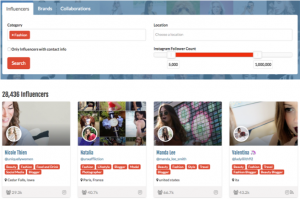
This free tool helps you find influencers in your niche that want to work with brands. It also enables you to organize your list of influencers and track their progress too.
Sort potential influencers based on demographics, search by social media platform or the influencer’s blog, and only recruit the ones that will help your business the most.
Grin.co
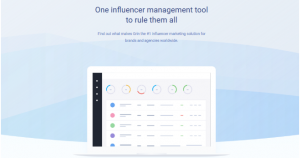
This comprehensive influencer marketing solution has a vast database of influencers from all industries. They are filterable based on things like location, social networks, and engagement rates.
You can also create content campaigns, manage payments, and even track your campaign’s progress to make sure your influencer is helping you get significant results.
Klear
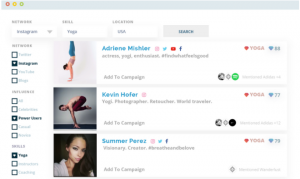
Klear is an influencer marketing tool that focuses mainly on social media presence, though it does let you search for influential bloggers too. Search Twitter, Instagram, YouTube, and blogs, and even filter based on skill, location, and influence level.
From there, you can contact influencers you’re interested in and even manage your campaigns.
In the end, it doesn’t matter how you find potential influencers. All that matters is that you do your research and make a list to use in the next step.
Step 3: Pick Your Influencers
Now that you have a list of influencers you think will be able to help your brand, it’s time to narrow the list down to the one you want to work with.
Though some of the influencer marketing tools available can get you started with this step by giving you access to blogs, social media, and “influencer ratings,” you need to dig deeper on your own.
Visit Their Social Media and Blog
If you follow prospective influencers on social media and read their blog posts, you’ll see them in action.
Plus, you’ll have a chance to engage with their audience before you approach them, giving you a good sense of whether their target audience aligns with yours.
Lastly, see how their website performs in terms of speed.
If it seems to be lagging, and you take them on as an influencer, recommend they use a CDN to speed up their page loading time and improve the user experience.
Monitor Engagement
While you check out their social media and blog posts, see how engaged they are with their audience.
Look for someone that answers questions, is involved in discussions, and seems to care about the people that follow them.
For instance, well-known influencer Marc Benioff (CEO of Salesforce) not only has 987K Twitter followers, but he has also posted nearly 19K Tweets.
Plus, his content sees a high level of engagement that involves him and his followers.
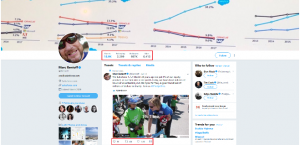
Higher engagement often leads to more traffic, which is perfect when you need to expose your brand to a broader audience.
Monitor Reach
It’s important to make sure your potential influencers are reaching the right kind of people, not just a lot of them.
After all, reaching a large audience does you no good if none of them want to buy what you’re selling.
Step 4: Reach Out to “The Ones”
Once you’ve done all your research, and narrowed your list down to the few influencers you think will have the most positive impact on your brand, it’s time to make contact.
Schedule interviews with your top choices so you can tell them about your business and see if they’re interested in being an influencer.
Here are some questions you should ask during these interviews:
- Have you ever heard of my business, and if so, what do you think of it?
- What methods would you use to tell your audience about my business?
- Do you currently take part in other influencer marketing, and if so, for which companies?
- How do you prefer to manage your marketing techniques, and are you open to change?
- How would you handle criticism, questions, or concerns from your audience?
Before you schedule interviews, sit down and think about what is most important to you.
Do you want brand exposure via social media or blog content, someone who can engage when people have questions, or just someone that has a far reach?
Knowing what’s important to you, as well as the answers your candidates provide during the interview will clue you in to which influencer is the best fit for your business.
And That’s All!
As a B2B business, it’s crucial you don’t avoid influencer marketing because you feel you can’t find a high-quality influencer to represent and help promote your brand.
Take the time to follow the steps outlined above to find an influencer that has all the qualities you’re looking for.
Confirm their values align with yours, they have a target audience that will benefit from what you have to offer, and a far reach in both the social media and blogging spheres.
And make sure they have the same commitment as you when it comes to helping you grow your business.
Influencers hold a lot of power when it comes to shaping people’s opinions about brands.
And if you do your research, focus on building lasting relationships, and commit to working together, your B2B business is sure to experience exponential growth and success with the right influencer.

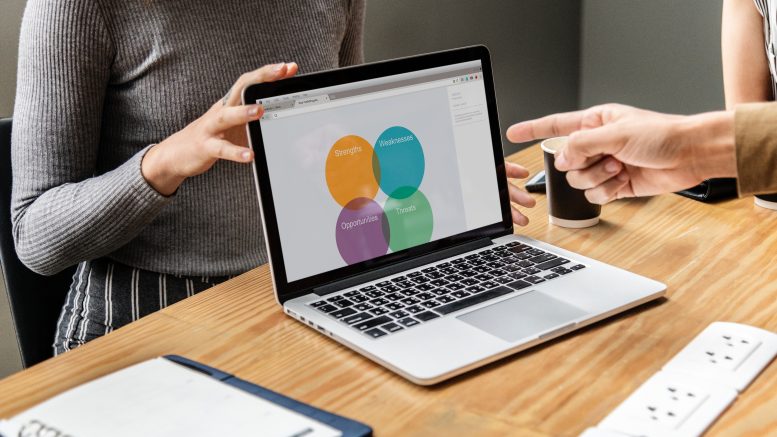

Be the first to comment on "Finding Influencers for Your B2B Business Made Easy"